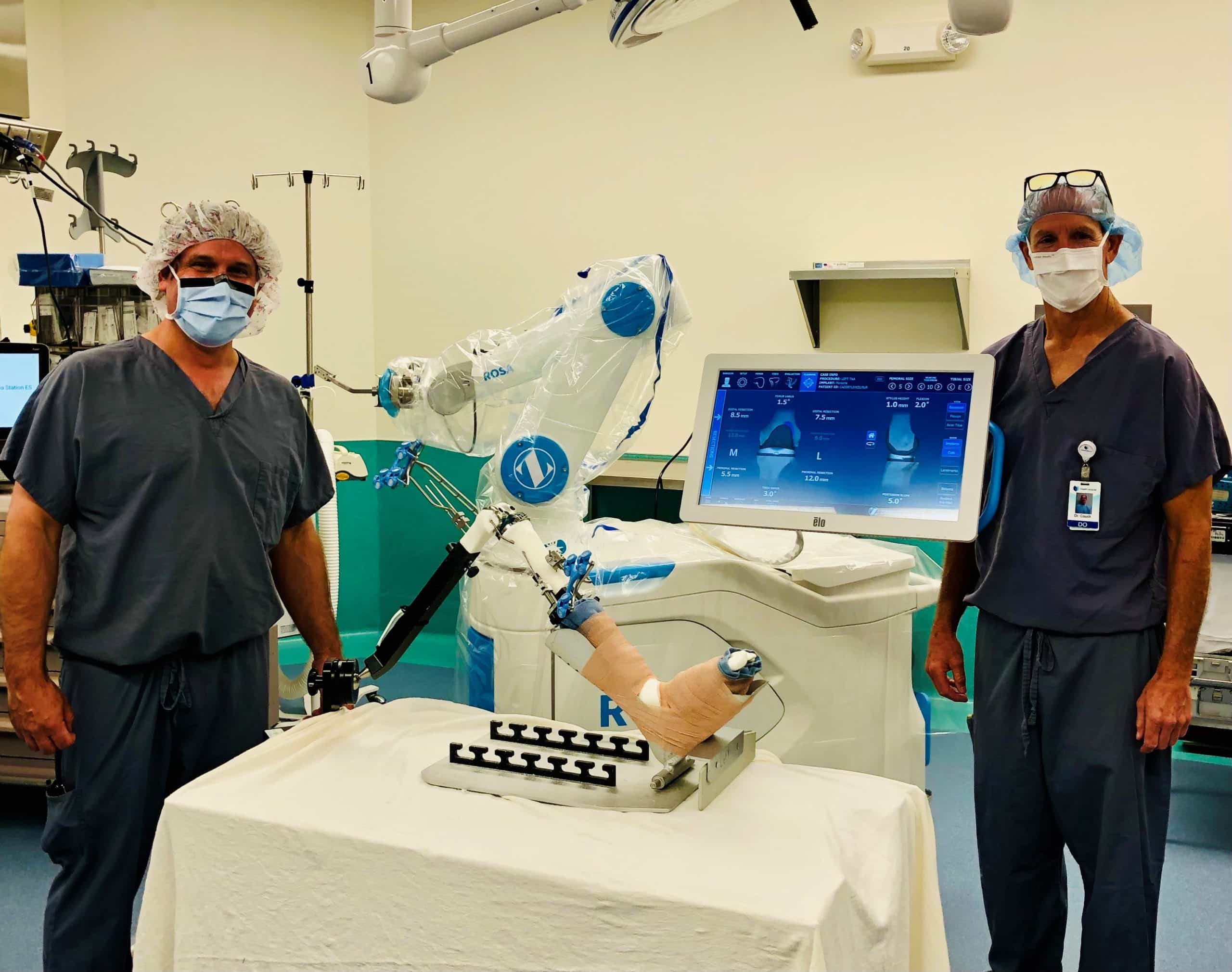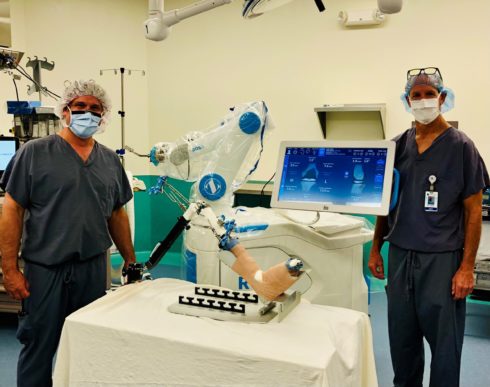If you have experienced the pain, tingling or weakness that can occur with carpal tunnel syndrome, you are not alone. Carpal tunnel syndrome (CTS) is a fairly common condition which occurs when one of the major nerves to the hand, the median nerve which runs from the forearm into the palm of the hand, is squeezed or compressed as it travels through the wrist. Thankfully, what was once a complex treatment for CTS can now be accomplished more quickly and more effectively through new surgical interventions that reduce recovery times.
Milder symptoms of CTS can be treated with physician-directed home care, which may include wearing a wrist splint, avoiding daytime activities that may provoke symptoms, performing specific exercises and taking breaks from tasks to rest the hand. Medications may also be prescribed to relieve pain and inflammation.

In many cases, non-surgical treatments only provide temporary results, with symptoms eventually returning. Surgery typically becomes the recommended treatment option when this occurs.
“Carpal tunnel release surgery is one of my more common surgeries,” said Dr. Jeff Barwick, an orthopedic surgeon at ECU Health Beaufort Hospital, a campus of ECU Health Medical Center. “Traditionally, we would make an incision in the palm to access the tunnel and free the median nerve. The recovery would take anywhere from two weeks on the fast end to several months on the slow end. Also, during this recovery period, many patients would not be able to resume their normal activities using their hands due to pain and weakness.”
A modified procedure performed at ECU Health Beaufort called carpal tunnel release with UltraGuideCTR ™ can perform the surgery less invasively and with much quicker recovery time for the patient.
“Now, because of ultrasound guidance, we can essentially perform the same surgery but using a much smaller incision,” said Dr. Barwick. “We also come under the muscles of the hands instead of having to cut through them. The healing of the incision and the muscles has traditionally slowed down the recovery process. The ultrasound essentially serves as my eyes and allows me to see into the carpal tunnel with a very minimal incision. Having carpal tunnel release with UltraGuideCTR™ available at ECU Health Beaufort Hospital offers community members convenient access to the procedure and allows them to stay close to home. Patients can also enjoy a better quality of life. When people can’t enjoy life due to pain, numbness and weakness in the hands and wrists, this can be taxing to them mentally, emotionally and physically.”
Some of the benefits of this new technology include a faster recovery time as opposed to the weeks of recovery involved with traditional carpal tunnel surgery. Going underneath the muscles with a drastically smaller incision, rather than cutting, creates a more positive experience for patents and often times allows them to return to work and the activities they enjoy within three to six days.
According to Sonex Health, Dr. Barwick is the first physician in North Carolina to offer his patients both carpal tunnel release and trigger finger release with real-time ultrasound guidance. Providing this new and innovative technology for the local community is another example of ECU Health fulfilling its mission to improve the health and well-being of eastern North Carolina. For more information about carpal tunnel treatment options including the ultrasound assisted surgery, please call ECU Health Orthopedics – Washington at 252-946-6513.
Greenville, N.C. – Nov. 2, 2021– Vidant Orthopedics has a new way to keep community members moving thanks to a new robotic knee surgery technology called the ROSA® Knee System offered at Vidant Beaufort Hospital, a campus of ECU Health Medical Center, and ECU Health SurgiCenter in Greenville.
Though recovery times will vary, most patients should be able to drive after two weeks, garden after three to four weeks and golf after six to eight weeks. The ROSA® Knee System is a robotic surgical assistant for total knee replacement. This new technology allows the surgeon to create a plan for the procedure using a 3D model of the patient’s knee, establishing a more precise view and a more customized approach for the patient’s joint anatomy.
“It is important to provide the latest in technologies to our patients and provide them with more options for their care,” said Dr. Deanna Boyette, chief of orthopedics, Vidant Orthopedics. “Along with this new knee replacement technology for in-patient needs, there is also the option to perform ROSA surgery on an outpatient basis, depending upon the individual needs of the patient.”
There have been seven ROSA surgeries performed at ECU Health SurgiCenter in its first week with six more scheduled in the near future.
“The orthopedic surgeons are still performing the knee replacement surgeries, and with the ROSA® Knee System, we can dial in the precision of our knee replacements to levels that meet the individual needs of the patient,” said Dr. Christopher Hasty, orthopedic surgeon at ECU Health SurgiCenter. “This technology allows us to provide the patient with the best knee replacement with maximum results with quick recovery time. Most patients are back to their regular activities within a couple of weeks.”
This total knee replacement technology supports patient care and offers advanced technology in the community so patients do not have to travel long distances to receive this procedure. The team of highly-trained orthopedic surgeons at Vidant Orthopedics is equipped with latest technologies, treatments and surgical techniques and can now perform these surgeries for patients who want to stay close to home.
The need for total knee replacement surgery results when other treatment options no longer provide relief. Unlike traditional total knee replacement methods, prior to surgery, the ROSA Knee takes a series of X-rays that can be used to create a 3D model of a patient’s knee anatomy. This 3D model enables the surgeon to plan the procedure according to the patient’s unique anatomy.
During surgery, ROSA Knee utilizes a camera and optical trackers attached to a patient’s leg to know exactly where the knee is in space. This helps ensure the plan the surgeon put into place is performed as intended. The ROSA Knee functions as an assistant to the surgeon providing the surgeon with data about the knee and helping in the precise positioning of the implant.

